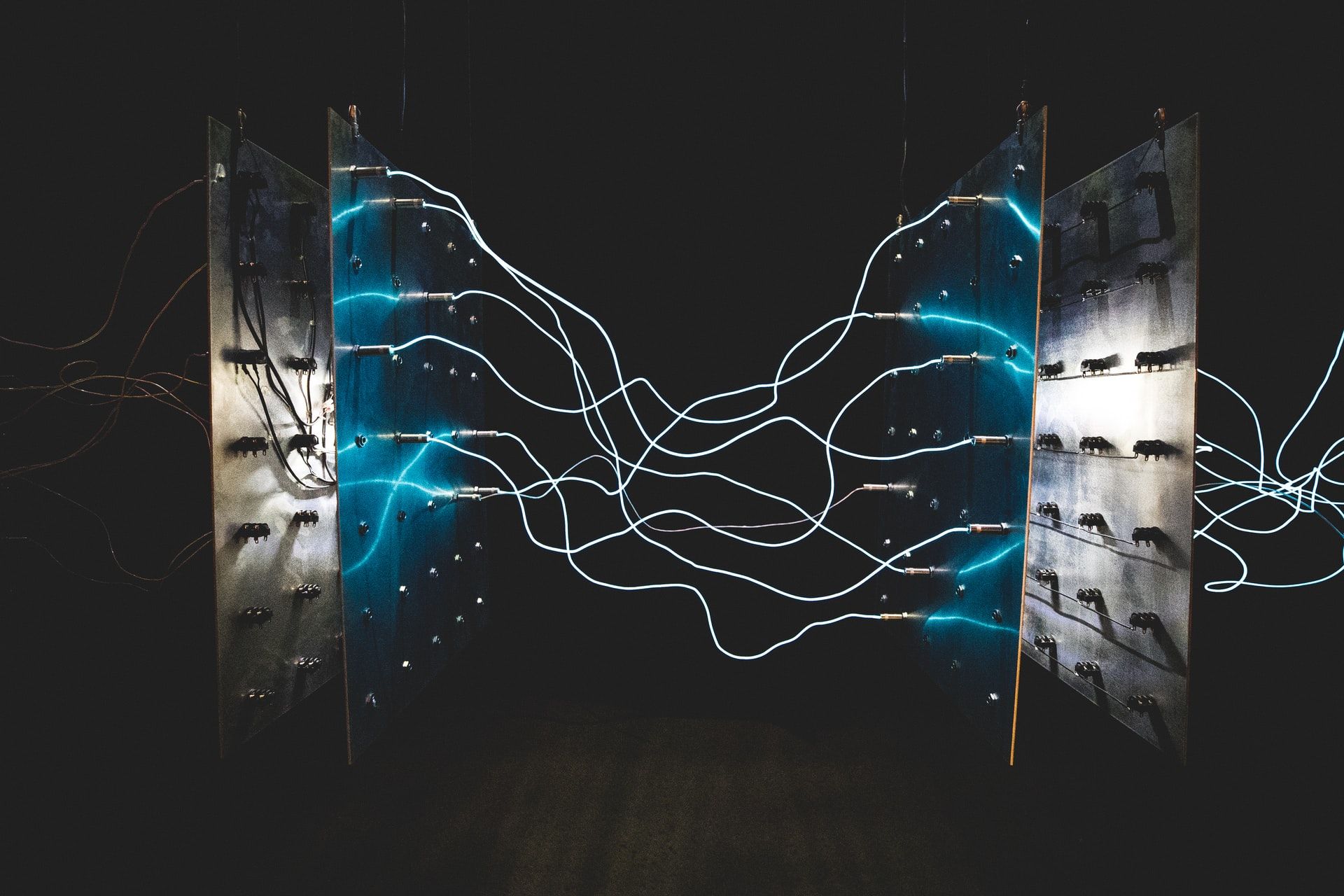Contemporary marketing has meant that, instead of the offered product, the customer or opinion leader is now at the center of all promotional activities. Since the evolution took place not only in the marketing itself, but also in the consumer's approach to various forms of advertising, he began to more consciously search for information about the offer offered to him. Hence the need to distinguish between "pull" and "push" communication strategies. And the key to success is skillful balancing between them.
- What is a pull and push strategy?
- Examples, advantages and use of the pull strategy
- Does the pull strategy have any disadvantages?
- Examples, advantages and application of the push strategy
- Does the push strategy have any disadvantages?
- Push and pull strategy - examples of tools
- Differences between push and pull strategy
- Pull and push strategy - how to use them together?
- When will a pull strategy be more effective than a push?
- Push vs pull strategy - which one to choose for a new brand?
- How to measure the effectiveness of pull and push strategies?
- Why is it worth mixing push and pull strategies?
Marketing is constantly developing and influenced by the environment. Both the planning, implementation, coordination and control stages are consciously oriented towards meeting the client's needs and preferences. One of the basic assumptions of modern marketing concepts is targeting a specific customer (target group), creating a persona, instead of targeting everyone.
Marketing communication now has a much wider dimension. In order to tie customers to a given brand, you need to build a lasting and long-term relationship that requires constant stimulation of curiosity and attractiveness. Dialogue and information exchange have become the preferred form of communication. The aim of modern strategies is to provide customers with long-term value, and thus create lasting relationships with them.
What is a pull and push strategy?
Pull means pulling and push means pushing. Therefore, the pull strategy consists in activities that attract the customer to the brand, while push means that you direct the message directly to the recipient or contractor and make sure that it reaches the right place with it. The terms outbound and can also be used interchangeably inbound marketing.
Examples, advantages and use of the pull strategy
Often the belief that a customer will type the name of your company into a search engine and immediately make a purchase is utopian. According to touchpoint theory, on client's decision-making process consists of repeated contact with the brand in different circumstances. It is only when you have built trust for a long time that you can count on the fact that at the moment of the trial, the client will actually recall your company from memory. For that to happen, you must first reach it with:
- video,
- podcasts,
- beautiful photos in social media,
- interviews,
- e-books,
- guides,
- history, biography.
Customers today are extremely sensitive to falsehood. The web is full of veiled advertisements and unverified information. Notice that the message of big brands is getting subtler. Sometimes there is no call to buy at all, and sometimes the pros and cons of various solutions are presented completely objectively. It happens that a brand cooperates with an influencer or an expert who does not "sugar", but honestly describes a given solution. This is because the pull strategy today requires a lot of finesse.
A perfect example strategy pull there are basically all business podcasts. Denise Duffield-Thomas from Australia offers women's courses, books and trips. Besides, it has a podcast and a feed on Youtube about how to earn. It would be virtually impossible to find people willing to travel for several thousand dollars among women who have never heard of her. Hence the strategy pull used in practice. Most people "start" with free content. They buy a book over time. Later, it's time for a course or other more expensive products. The philosophy is very similar Girlboss (Sofia Amaruso) in the USA or Lady Of Your Time in Poland. This is no coincidence - this strategy just works!

Does the pull strategy have any disadvantages?
Pull strategy provides invaluable sales support with the help of valuable content. However, it can also have several disadvantages:
- if the offer is not good, the customer will be satisfied with the content, and he will do the shopping with the competition
- when client path it is riddled with obstacles, the customer will read the articles or watch the videos but buy nothing
- if marketing communication is not clear, the client will read the content but won't know what to do next
- if the content is not interesting, yes communication strategy it will not work at all.
We can say that pull strategy It will be more expensive and more risky. If no one comes across the content in question or if it is not interesting, it is virtually as if there was no strategy at all... On the other hand, the advantages of this approach are so clear that most serious brands today do not ignore the power of sponsored articles, guides, product placement images or videos.
You do not know which strategy will be most effective for your company?
We are here for you to implement the best!
Examples, advantages and application of the push strategy
Push strategy is the everyday life of every comedian. On the web, it will be corporate website, advertisements and banners. Push marketing is about reaching the customer with the offer. The form is of secondary importance here. You may have seen the statistics that for every 100 cold-mail or phone calls there are 1-2 sales. It doesn't sound very impressive, but the stats of a good seller are so much better.
Besides, at large scale the numbers start to become impressive, and the costs of such a strategy are usually not large. Example push strategies this canvassers telecommunications companies who call customers and ask directly if they need a new phone. Another example is flyers, posters and banners advertising a pizzeria across town. Even if you don't feel like having a pizza, you might end up giving in as it seems like the simplest solution.
Does the push strategy have any disadvantages?
A synonym for an intrusive salesman is one who uses strategy push. You need to feel your client, because some people just hate such techniques. It might seem like a minor problem on the web where you can hide behind banners or mailing. Here, however, strategy lovers push also do not have an easy life. Lots of people use ad blockers and spam filters.
The very protection of personal data and rights is on a different level than several dozen years ago - you can not call random people from the phone book or invade them at home. The number of TV viewers is decreasing, and services are popular on the web streaming - many of them have no advertising. All this makes even the best strategy push may not be effective. This therefore you have to invest in mix strategy pull and push.

Push and pull strategy - examples of tools
A push communication strategy involves the use of tools with which we 'push' content towards the recipient. The information is readily available and the recipient does not have to search for it himself, he just has to reach for it. Examples of push tools include: newsletters, e-mailing, face-to-face meetings, SMS, phone calls and instant messaging, Google Ads campaignspresence at fairs and exhibitions,
The pull communication strategy involves the use of tools that recipients must reach for themselves, so they must look for them in order to become aware of their existence. Examples of "pull" tools are: newspapers, blogs, social media, portals, e-books, events, word of mouth marketing.
Some tools used in communication can be classified as both types - push n pull. For example, the Internet - if we use it in the form of a website, it is a "pull" tool, if in the form of messengers or e-mails, it is a "push" tool. Distinguishing the nature of tools is important due to the fact that "pull" tools require additional activities related not only to their effective use, but also to promoting them so that they become present in the awareness of recipients.
Differences between push and pull strategy
Push strategy creates a specific need and targets the immediate recipient of the command. It is more aggressive and is most often used for less well-known and less recognisable brands and for start-ups. It is based on the principle of 'permission marketing' (in order to receive information, the customer first agrees to it). It is a concept of direct action that influences potential customers to encourage them to buy or change their perception of a brand. It aims to inform consumers about the company's offer, vision and mission, current promotions and other benefits of buying specific products or services.
Pull strategy results in an increase in customer needs. It is less aggressive and is based on the delivery of so-called 'added value' and is therefore more costly. It is effective with well-known companies and recognisable brands. It is a concept that assumes that the customer requires information and consciously seeks it, identifying with the values of a particular brand.
While in the case of push" strategy The company's aim is to reach a broad spectrum of representatives of the distribution chain with its message, while in the pool strategiesl communication activities mainly target end customers, building in them the need for a particular product or service.

The recipient of "push" messages has no influence on what content ultimately reaches him, while the recipient of "pull" messages is aware of his needs, therefore he conducts a creative dialogue with the brand.
Pull and push strategy - how to use them together?
Consider that web users increasingly only see content from profiles that they previously liked, subscribed to or started visiting. Even if they see an ad, they can block the sender in the future. Meanwhile, from the profiles of influencers, own brands and brands close to the user's heart, the advertising message flows in a wide stream around the clock. You may have noticed how carefully brand profiles on Instagram or YouTube are kept today. Even the most luxurious ones take care to reach the young and surprise the elderly. All this is because today the decision-making power is largely on the side of the consumer, who can at any time "silence" the message that no longer suits him.
Your customers expect specific communication from your brand.
Do you know their needs? How well do you communicate about it?
Nowadays, a mix of pull and push strategies is often what works best. Suppose a customer wants to buy a car. He's likely to spend a lot of time comparing models on the web, reading reviews, and looking at reviews on social media. Then, however, he will make an active effort and visit the salon. In this example, the pull strategy worked, where the customer was "attracted" to the company with their advertising materials, and also "push" when he had nothing else to do than visit the store in person. In our work, we often deal with a combination of these two methods. However, it cannot be done without realizing what it is promotion strategy push and pull.
When will a pull strategy be more effective than a push?
The choice between push and pull marketing strategies depends on a number of factors, such as the nature of the product, its stage in the market and consumer behaviour. Pull strategy is particularly effective for established products where there is strong brand awareness. Customers, being familiar with the product, actively seek it out themselves, which makes promotional activities focus on building loyalty and providing valuable content. In such cases push and pull strategy may be balanced, but it is the elements of the pull strategy play a key role in attracting informed consumers.
Push vs pull strategy - which one to choose for a new brand?
For a newly established brand, it is crucial to build recognition and gain consumer trust. In this context push and pull marketing strategies must be carefully selected. Push strategy can be more effective at the initial stage, when the brand is still unknown. Through intensive promotional activities such as advertising, price promotions or direct customer contact, a company can quickly increase awareness of its offering. However, as recognition increases, it is worth gradually introducing elements of pull strategy, such as content marketing or community engagement on social media, to build lasting relationships with customers.
How to measure the effectiveness of pull and push strategies?
Evaluating the effectiveness of marketing activities is key to optimising budgets and achieving objectives. In the case of push and pull marketing strategies, different metrics can be applied. For push strategies, indicators such as the number of new customers, short-term sales growth or the effectiveness of individual promotional channels are important. However, pull strategy focuses on long-term customer engagement, so it makes sense to analyse indicators such as website traffic, time spent on the website, number of newsletter subscriptions or level of social media interaction. Examples of push and pull strategies indicate that a combination of both approaches requires monitoring of both short-term and long-term success indicators to fully assess the effectiveness of marketing activities.
Why is it worth mixing push and pull strategies?
The effective use of tools that make up a communication strategy depends primarily on the complementarity of individual activities. The first step in creating an effective communication strategy, involving the use of "pull" and "push" tools, is a thorough understanding of customers: their needs, decision-making processes, expectations, methods of problem solving and obtaining information. Satisfying customers' needs is not enough. It also matters enterprise competitiveness. An organization must create a competitive advantage, that is, give a reason why its offer will be noticed and selected.
The real source of stable growth and profitability of the company is the loyalty of valuable customers. Customers are now assets of an enterprise: the longer they are kept, the more they contribute to value creation. Communication strategies like "pull"Attract the attention of recipients, while strategies such as"push”They maintain mutual relations.

Although in theory both push and pull strategies - stand in opposition to each other, in practice they complement each other and work in synergy. When a brand enters the market at the beginning it realises push strategywhile knowing that the purpose of its activities is the effective implementation of the pull strategieswith which to build lasting and valuable relationships.
Knowledge in a pill:
What is a pull strategy?
The pull strategy consists in attracting customers to a given brand by means of videos, podcasts, interviews, guides, e-books, etc. It is a necessary sales support with the help of appropriate content.
What is the push strategy?
The push strategy is focused on reaching the customer by means of: a website, advertisements, newsletters, telephone calls, banners, etc. The form does not matter much, it is important that the information is easily available and the recipient does not have to look for it.
How to use push and pull strategies together?
To use both strategies together, you need to understand customer needs, decision-making processes, expectations, and how to solve problems and obtain information. Pull communication attracts the attention of customers, and push – maintains mutual consumer/brand relationships.

